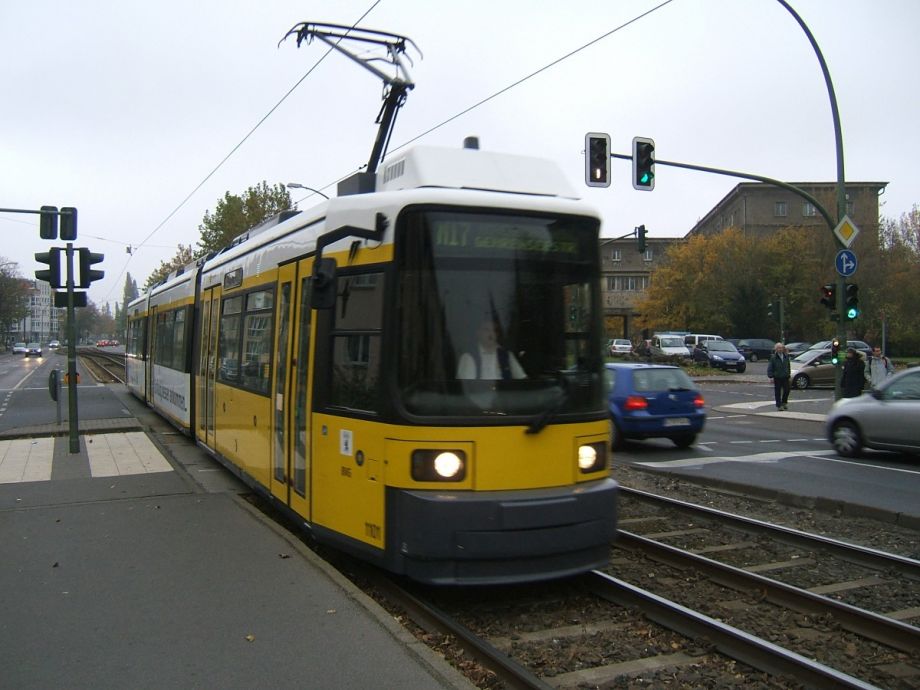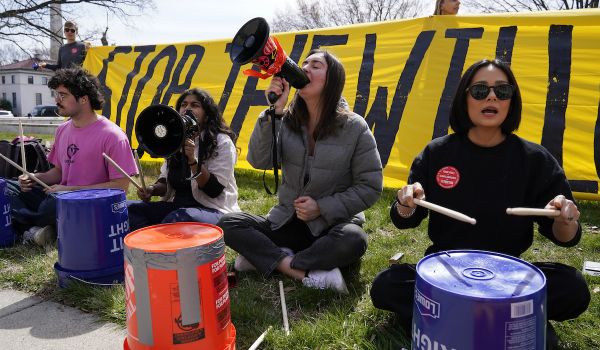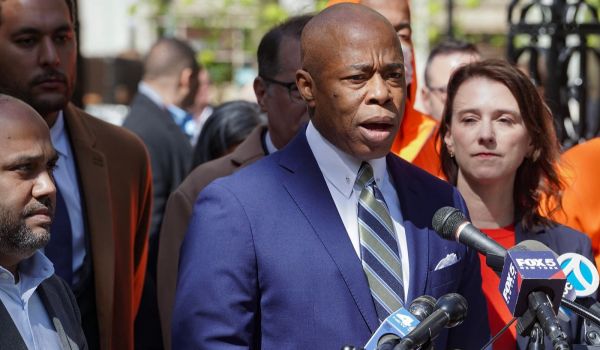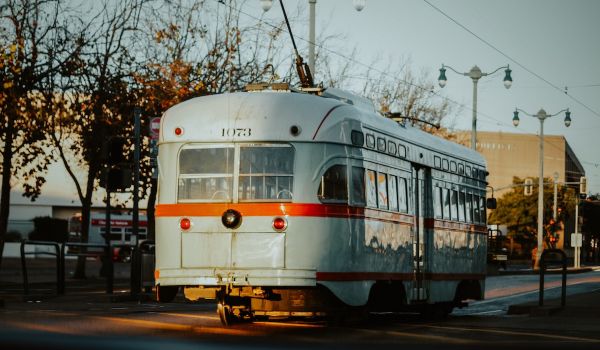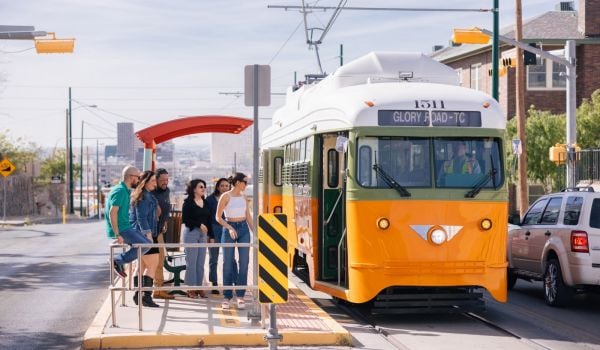Our weekly “New Starts” roundup of new and newsworthy transportation projects worldwide.
Berlin to Undertake Major Light-Rail Expansion
The new left-wing “red-red-green” alliance of parties that will govern the German capital of Berlin has announced a number of programs it will undertake as part of the “BerlinStrategie 2030” coalition agreement among the Social Democrats, the Left Party and the Greens. Chief among them, the International Railway Journal reports, is a major expansion of the city’s light-rail network.
It’s part of a larger transportation program that includes adding cycling and pedestrian options, canceling some road-building projects, introducing a citywide speed limit of 30 kmh (18.6 mph), expanding S-Bahn regional rail service and reopening some lines, and removing most traffic from Unter den Linden, the grand boulevard through central Berlin.
Four tram lines already being planned by Berlin Transport will be fast-tracked to begin construction next year. Work on five more tram lines will begin by 2021; the lines in this group will also bring tram service back to the former West Berlin for the first time since the 1960s. The city government will also begin planning work for six additional lines with the goal of building them between 2021 and 2026; if built, they will create an extensive tram network in the western part of central Berlin.
The coalition’s transportation plan also calls for headways as short as 5 minutes on the busiest portion of the S-Bahn, several extensions into neighboring regions, greater autonomy for the city to operate suburban rail services and city ownership of the S-Bahn rolling stock by 2028.
Because the city’s finances are weak, the tram expansion plan will hinge on the German federal government’s willingness to support it. The city itself will devote 60 million euros per year ($64.51 million U.S.) to the program. As no money is available to buy new trams at present, older existing trams will be kept in service for a while longer in the near term.
Jerusalem Announces Plans for Second Light-Rail Line
Arutz Sheva Israel National News reported Dec. 1 that the Jerusalem city government has submitted plans for a second light-rail line through the city.
The Blue Line, the second of four light-rail lines planned for Jerusalem, will have a main line running from Gilo at the city’s southern end to Ramot in its northwesternmost corner via the city center. A branch will serve another southwest neighborhood, Malkha, on a route that takes the line down Emek Refaim Street south of the city center.
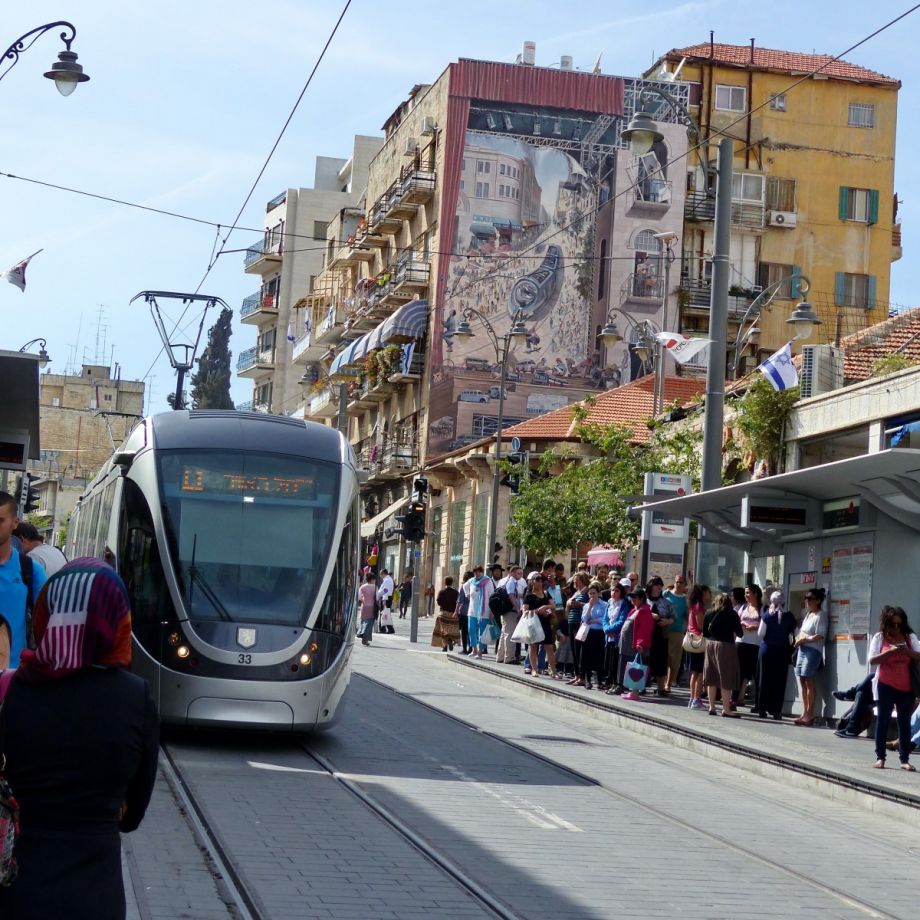
Jerusalem light rail (Photo by Claude Villetaneuse)
Jerusalem Mayor Nir Barkat reassured residents in a letter that, on the contrary, the line will mean new patrons and increased revenue for the street’s existing businesses along with “hundreds of millions of shekels” of new investment in streetscape improvements “while also preserving the uniqueness and appearance of the street and the German Colony.”
The city had planned to run the line along a former rail right-of-way to Emek Refaim’s east, but after consultation with local residents and businesses, opted to run it down the street instead, as the old rail line had become a popular linear park. Barkat defends the decision to shift the route, pointing to the Red Line’s success in reviving the fortunes of Jaffa Street, the central Jerusalem thoroughfare down which it runs.
Kansas City Contemplates Another Streetcar Extension
Clay Chastain may be the most persistent citizen transit advocate in the country, refusing to give up on his particular vision for light rail in his former hometown even after Kansas Citians voted down what Chastain said would be his last expansion proposal on Nov. 8. But that doesn’t mean the city isn’t interested in expanding light rail.

(AP Photo/Orlin Wagner)
The Kansas City Streetcar Authority expects to pick a consulting firm this week to conduct a feasibility study for the extension. Authority Executive Director Tom Gerend said multiple firms had expressed interest when the authority board authorized the study in September.
The study will examine the technical, cost and financing issues associated with the project and include public input sessions. The authority is proposing the extension now in response to the first signs of development taking place near the park, which runs along a relatively isolated stretch of the riverbank north of the railroad tracks that separate it from the rest of downtown. Port KC, the city’s port authority, broke ground last week on a $72 million retail and apartment project on the riverfront near the park.
The Streetcar Authority, Port KC and the Kansas City Area Transportation Authority will split the study’s $225,000 cost. Ridership on the existing Main Street streetcar line remains strong even after falling from its summertime highs of more than 10,000 trips daily, with ridership averaging 6,000 passengers a day in November.
Know of a project that should be featured in this column? Send a Tweet with links to @MarketStEl using the hashtag #newstarts.

Next City contributor Sandy Smith is the home and real estate editor at Philadelphia magazine. Over the years, his work has appeared in Hidden City Philadelphia, the Philadelphia Inquirer and other local and regional publications. His interest in cities stretches back to his youth in Kansas City, and his career in journalism and media relations extends back that far as well.
Follow Sandy .(JavaScript must be enabled to view this email address)

